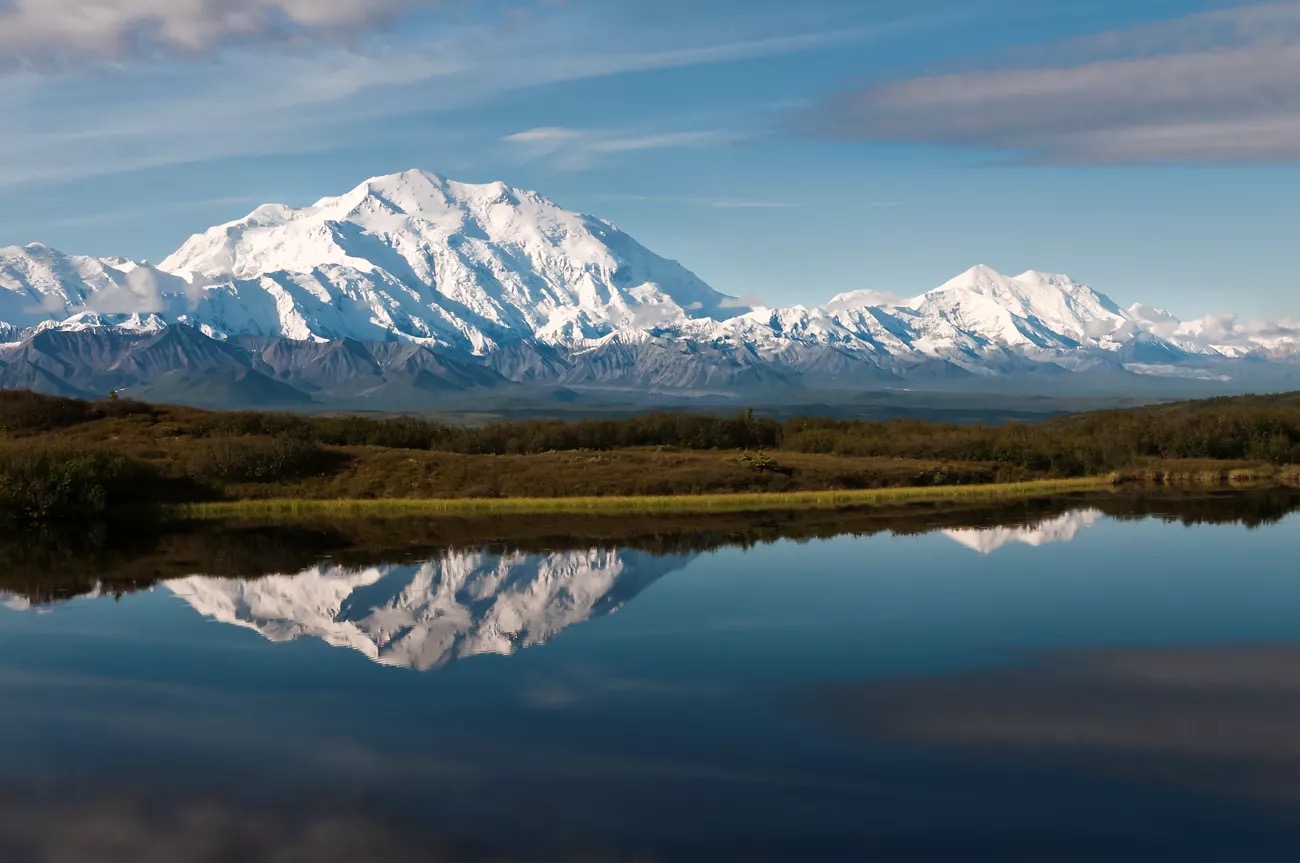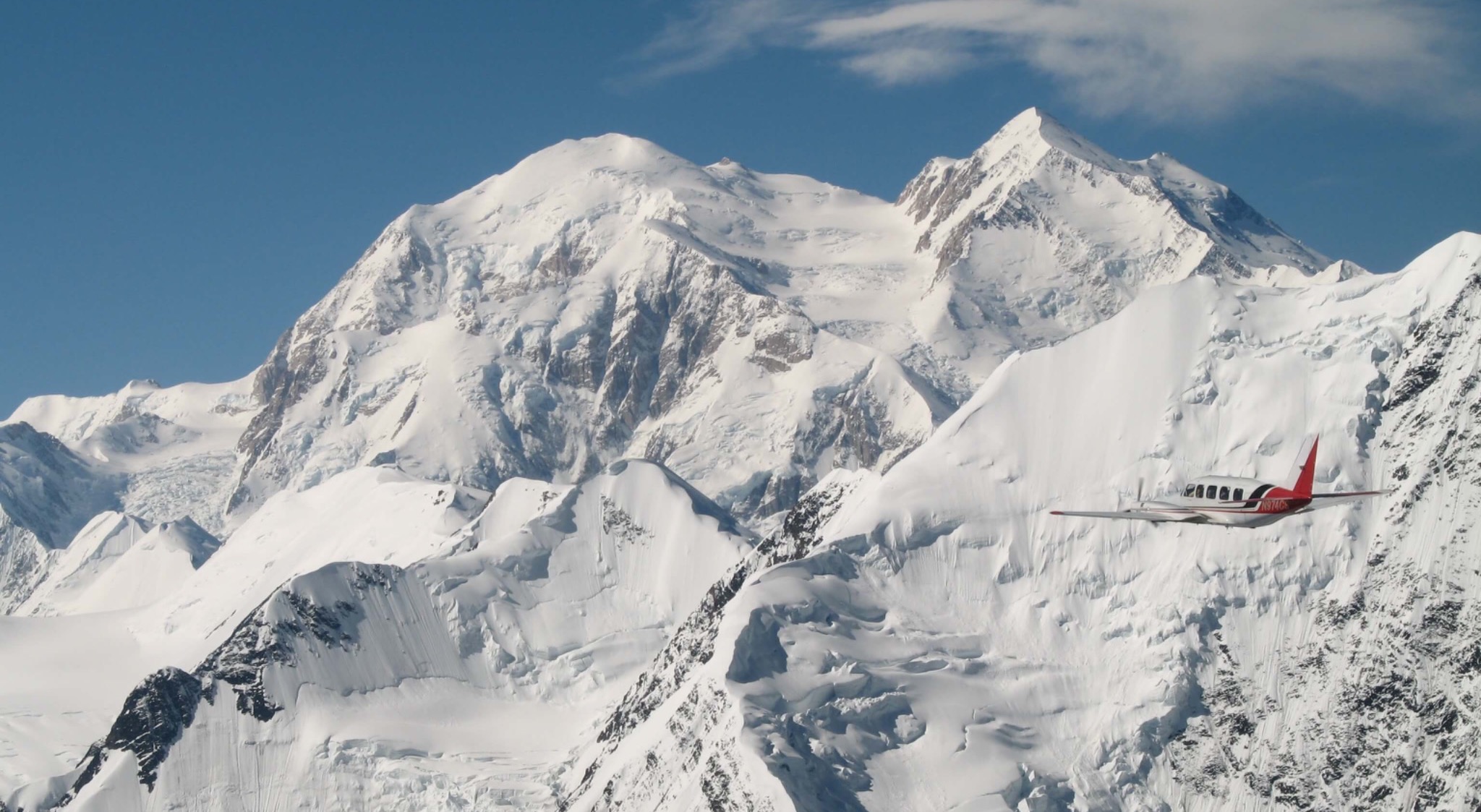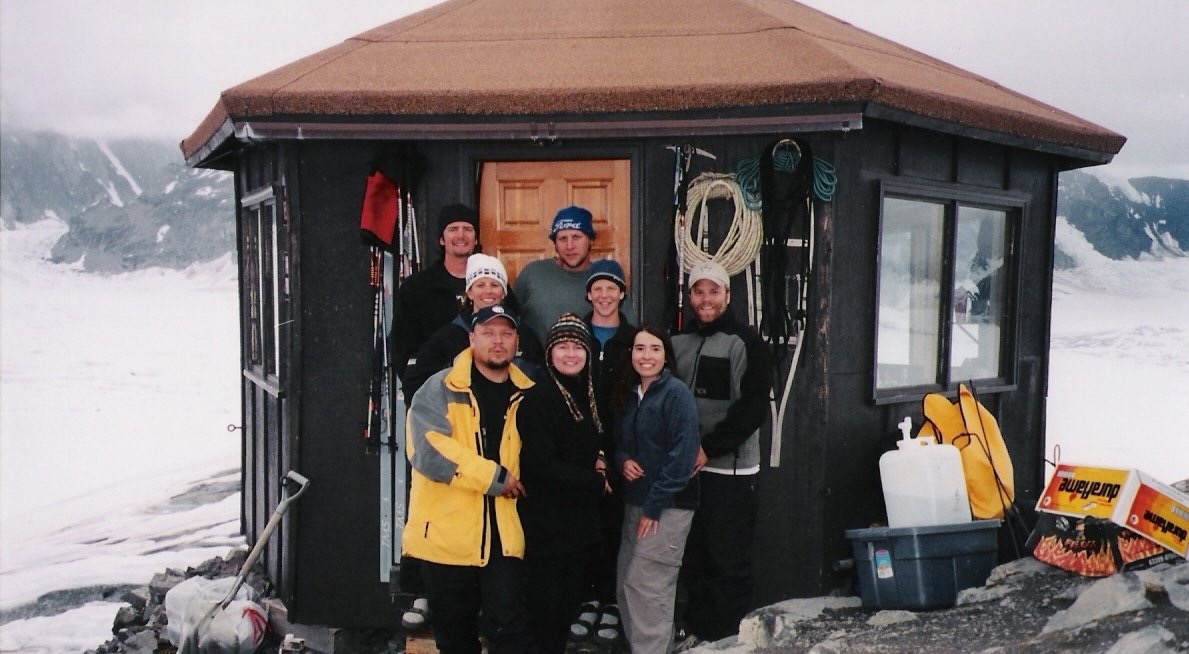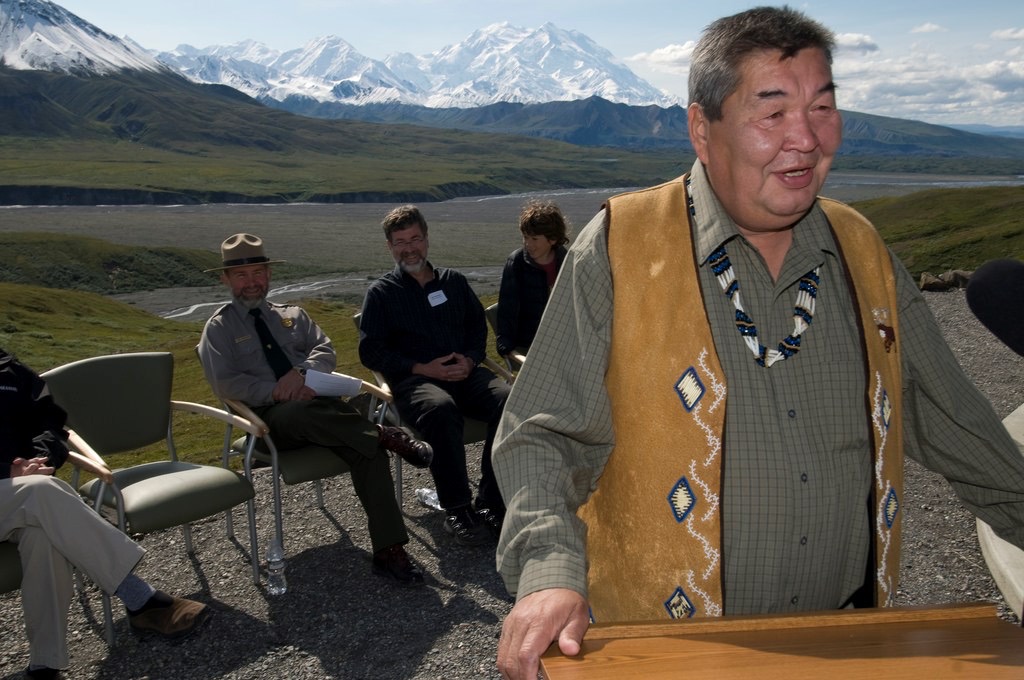
Forever Denali
Full disclosure: I’m getting political in “A Fan’s Notes” for the first time, even though I vowed in my introductory post a year ago that politics would have no place here.
Hopefully, this is the first and last time, but I’m not making any promises—not with the rash of deplorable actions the new administration rolls out daily.
The topic I’m addressing today isn’t the most critical or consequential thing happening in the U.S.—not by a long shot—but it’s important to me because it affects something I’ve been a fan of for the last 30 years.
I’m talking about President Trump’s childish, vindictive, and racist—yes, racist—decision to rename Denali, the highest peak in North America at 20,310 feet tall and a sacred shrine for Alaska’s indigenous people.
On inauguration day, Trump reverted Denali to the highly offensive moniker “Mount McKinley.” The moment that petty, petulant, and pathetic little man issued an executive order with the laughable headline, Restoring Names That Honor American Greatness, I decided to devote my next blog to a mountain that truly embodies greatness.
I know my tirade won’t make a difference, but I started “A Fan’s Notes” to honor the things I love. And Denali fits that bill as much as any beer, book, band, or basketball team I’ve waxed poetic about since launching this blog a year ago.
What’s in a name?
For time immemorial, the Koyukon Athabascan people of Interior Alaska have called the mountain Deenalee—now written as “Denali”—which means the “great one” (though some assert it means “high one” or “tall one.”)
In many ways, that title is as much about the mountain’s cultural and spiritual importance as its physical size. Denali is a place of great power for Alaska Natives. That’s why calling it McKinley is an abomination.
The controversy began in 1896, when a white prospector felt entitled to name the landmark monolith after William McKinley, the Ohio governor then running for president. The name stuck, aided by the fact that McKinley won and served as president until an assassin gunned him down in 1901. In 1917, the U.S. government officially declared the mountain’s name Mount McKinley.
A debate over Denali’s official nomenclature ensued in the decades that followed. Alaska Natives and non-native Alaskans alike called it Denali and asked that the name be made permanent. Indignant Ohioans—notably one congressman whose name isn’t worth repeating here—refused to budge and fought hard to keep McKinley.
They did this even though President McKinley never stepped foot in Alaska, making the name and their fight even more farcical. Since Ohio held more political clout than the 49th state, as it does today, there was no way Alaska could win this argument.
In 2015, President Obama thankfully issued an executive order restoring the mountain to its rightful designation, “Denali.” (For a fascinating and much deeper dive into the naming history, check out this fantastic article from the Anchorage Daily News, where I worked from 2002-2005.)
But then, on his first day in office a few weeks ago, Trump overturned Obama’s executive order with one of his own. The new EO called Obama’s decision to return the mountain to its native name an “affront to President McKinley’s life, his achievements, and his sacrifice.”
What a fucking joke. The only affront here is referring to the great mountain as anything but what Alaska Natives called it for their entire existence, long before white men entered the chat. It’s another racist dog whistle—toward both Natives and Obama—from a man who hates anyone of color.
I fully recognize that Denali isn’t part of my ancestry or heritage, but I’ve felt a cosmic connection to the mountain for the last 30 years. I thought it was my duty to take a stand.
‘The Great One’
In 1995, I landed a summer job working with the tour company Gray Line of Alaska in Denali National Park and Preserve.
(Side note: In future blogs I’ll share the stories of how I wound up in Alaska and what happened while I lived there, including meeting my wife, Sandy, in the glorious and life-changing summer of 1997.)
That June, I flew into Anchorage to begin my seasonal job in Denali, the six million-acre national park four hours north of the city. As a 24-year-old eager for new experiences, arriving in the Last Frontier felt like a dream thanks to Alaska’s long days, jaw-dropping vistas, and seemingly endless outdoor adventures in every direction.
It was the wildest and most expansive place I could imagine, and I immediately realized the guidebooks I’d been reading couldn’t do it justice. Indeed, no brochure or website could prepare me for seeing Denali a few days later.
Denali isn’t visible from the park entrance, so visitors often book bus or plane tours to get close and say they’ve seen the continent’s highest peak. One of my job duties was selling those tours. Not surprisingly, the $200 hour-long plane ride was among the more popular excursions.
Because the flightseeing companies wanted employees to take the tour first so they could adequately promote it, on my first day at Gray Line, I found myself in a Denali Air single-prop plane alongside several coworkers. We took off from the tiny airstrip and headed west, filled with anticipation but unsure what we’d see.
After a few minutes in the air, against a bluebird sky, there appeared before us this massive white monolith rising high above the surrounding peaks and valley floor below.

There it was. Denali. The Great One.
I couldn’t take my eyes off it. No one could. I didn’t bother taking pictures because I didn’t think any photo could capture its splendor. The mountain was so stunning, so captivating, so mesmerizing that it almost didn’t seem real.
For the rest of my time in Alaska—three more summers in Denali and seven years living in Anchorage—I tried to see Denali every chance I could. This was challenging because the mountain makes its own weather and is visible only 25 percent of the time, but the fact that clouds often obscure Denali’s peak only added to her mystery.
Aside from that first glimpse, none of my Denali viewings could match the time in 2002 when my girlfriend (now wife) Sandy and I were lucky enough to join several friends on a three-day stay at the Don Sheldon Mountain House. Built in 1966, the rustic cabin sits on a glacier on the south side of Denali. It’s 10 miles from the summit and accessible only by ski-equipped airplane.

During those three days of revelry in the mountain’s shadow, I felt a oneness with Denali, a connection that will last a lifetime. Denali emits an energy you can’t comprehend until you’ve stared at it, studied it, listened to it.
Words can’t explain what the mountain taught me or how it touched my soul, but I feel its impact to this day. Ultimately, though, my experience isn’t what matters when it comes to the mountain’s name.
‘The mountain’
The only thing that matters is what the Athabascans call this singular mountain that honors the power Denali holds in their culture. If our president had one iota of empathy or understanding of native history—and if he didn’t despise anyone who isn’t white—perhaps he’d see that.
Unfortunately, his puny brain only measures the world in scoring political points and taking opportunities to erase the actions of his predecessors, like President Obama—a far greater man and leader whose shoes he’ll never fill.
As I thought back to my time living in Alaska, I remembered that no self-respecting Alaskan ever called it “Mount McKinley,” even though that was the official name back then, too. Locals referred to it as “Denali” or, simply, “the mountain.” That’s still true today.
A force of nature like Denali—something so perfect, so prominent, so permanent—doesn’t need a descriptor.
Which led me to an odd conclusion, a 180-degree turn from the furious anger I felt when I began writing this blog a few weeks ago.
Yes, I’m still outraged that a mountain I’ve loved for 30 years now officially bears the name of a man who has nothing to do with this majestic peak, but what’s labeled on a map or written in a newspaper article doesn’t matter.
And, yes, President Trump will always act in ways that compensate for his obvious shortcomings and jealousy of a Black man like Obama, but his racist renaming executive order can’t stand the test of time. That’s because politicians don’t get the last word on Denali.
But neither do I.
While researching this blog, I discovered a 2008 recording called the Legend of Denali, which beautifully explains how Denali was created. This is the only story that matters.
In a short audio clip, the late Chief Mitch Demientieff of Nenana, a village in Interior Alaska, tells the origin story with perfection and grace.

According to the legend, Denali formed during a battle between two men, Raven Chief and Yahoo. In a rage, Raven Chief chased Yahoo down a rushing river in his canoe and tried to kill Yahoo with his deadly spears.
Yahoo used his powerful medicine to turn the river’s crashing waves into giant mountains of stone that shielded him from Raven Chief’s attacks.
One of those protective stones became Denali.
I’ll let Chief Demientieff’s voice finish my blog because his telling of this timeless story is more poignant and powerful than anything I could write. If you’ve come this far in my blog, perhaps you’ll come a bit further by listening to the Chief’s wisdom.
Rest well, Chief Demientieff. May Denali forever guard your spirit. And may the Great Raven always watch over you, your people, and your land.
The Legend of Denali
Gazing around, Yahoo saw the two mountains he had created. There was a smaller one to the west now called Foraker. But the larger one—the one the great war spear glanced off before shooting into the stars—that mighty dome would be called Denali, The Great One.

Post a comment